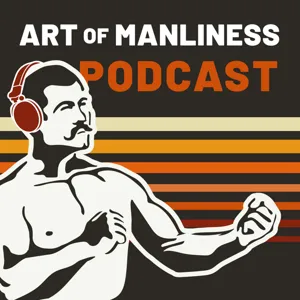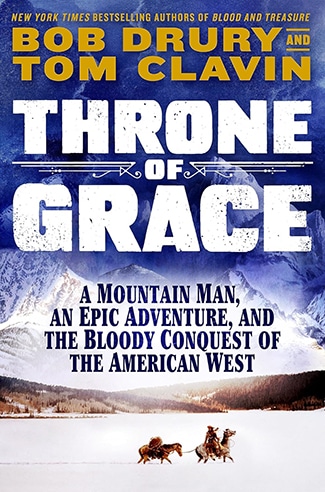Podcast Summary
Essential physical habits for a healthy and pain-free life: Focus on 10 essential habits like breathing, mobility, and sleep for a healthy and pain-free life. Regularly assess progress with given tests.
As we age, focusing on essential physical habits becomes more important than just striving for peak performance. Kelly Starrett, a physical therapist who has trained elite athletes, shares 10 essential habits in his new book "Built to Move." These habits include practices like breathing, mobility, and sleep, and each habit comes with a test or "vital sign" to assess progress. Starrett emphasizes that these habits are not just for athletes, but for anyone looking to live a healthy and pain-free life. Even young athletes are starting to adopt these principles to extend their careers and enhance their performance. As Aristotle noted, in our prime, we seek to be strong and fit for exertion, but as we age, our focus shifts to being strong enough to do what's necessary and free from pain.
Assessing and improving mobility and flexibility: Daily practices like stretching and foam rolling can help reduce pain, increase energy, and improve mobility and flexibility, ultimately leading to a healthier, happier life.
Our bodies send us signals through pain, and ignoring these signals can lead to long-term health issues. The 10 essential habits discussed can help address these issues and improve overall well-being, regardless of age or athletic goals. The sit-and-rise test, for example, is a simple way to assess mobility and flexibility, and daily practices like stretching and foam rolling can help improve these areas. By focusing on these habits, we can reduce pain, increase energy, and ultimately live more vital, engaged lives. Pain is not a sign of weakness, but a request for change. By addressing the root causes of pain and discomfort, we can transform our relationship with our bodies and live healthier, happier lives.
Sitting and Rising Test: A Simple Predictor of Healthy Aging: Regularly practicing the sitting and rising test can enhance hip range of motion, improve overall mobility, and potentially prevent costly interventions. Maintaining social connections also contributes to overall well-being and counteracts negative effects of isolation.
The ability to get up and down off the ground independently is a crucial predictor of healthy aging. This simple test, which involves sitting on the floor and getting up without using support, can provide insight into one's movement fluency and potential areas for improvement. By regularly practicing this movement, individuals can enhance their hip range of motion, improve their overall mobility, and potentially avoid the need for costly interventions later in life. The test is easy to do, and the results can provide valuable information about one's current health status and potential for future mobility challenges. Furthermore, maintaining social connections and engaging in behaviors that strengthen these bonds, such as eating as a family, can contribute to overall well-being and counteract the negative effects of isolation.
Connecting brains and bodies through community and simple practices: Improve health and well-being by prioritizing social connections and practicing simple habits like sitting on the floor and deep breathing
Our brains and bodies are deeply interconnected with our social environments and physical habits. The brain functions best when it's part of a connected community, and our bodies thrive when we engage in simple practices like sitting on the floor and deep breathing. Sitting on the floor can improve flexibility, mobility, and overall health, while deep breathing can enhance oxygen intake and mechanical ventilation. These seemingly small habits can have significant long-term benefits, from improving our ability to run and squat to maintaining a healthy lymphatic system. By prioritizing social connections and incorporating these simple practices into our daily lives, we can set ourselves up for better health and well-being in the future.
Improving breathing leads to better health and performance: Effective breathing can enhance posture, mobility, CO2 tolerance, oxygen utilization, and reduce neck/jaw pain. Incorporate breathing exercises and assess hip mobility for optimal movement.
Effective breathing plays a crucial role in overall health and performance. The first movement of the spine is actually the breath, and improving breathing can lead to better posture, increased upper back mobility, and even increased CO2 tolerance. This can lead to better oxygen utilization and improved athletic performance. Additionally, practicing nose breathing throughout the day can help reduce neck and jaw pain. Breathing exercises and drills can be easily integrated into daily life during warm-ups or walks. The couch stretch is a simple assessment for hip mobility, and addressing hip flexibility can help alleviate achy hips and improve overall movement.
Effective exercise for hip extension: Practicing the couch stretch daily and incorporating isometrics and soft tissue mobilization can improve hip extension and alleviate knee and back pain.
Improving hip extension can help alleviate knee and back pain. The couch stretch is an effective exercise for enhancing hip extension, as it targets the glutes and allows for deeper hip flexion. Many people struggle with hip extension due to stiff hips and quads, leading to compensations in other areas like the hamstrings. Daily practice, including isometrics and soft tissue mobilization, can help improve hip extension and overall mobility. Additionally, shoulder pain is often a result of incomplete range of motion and sensitivity to tissue quality. Understanding the connection between range of motion and pain can help individuals address shoulder issues through targeted exercises and lifestyle adjustments.
Impact of pelvis and leg issues on lower spine and shoulder health: Issues in the pelvis and legs can affect the lower spine and shoulders, limiting range of motion and force production. Regular practices like hanging and sun salutations can help improve shoulder function and overall upper back health.
The human body functions as an interconnected system, and issues in one area can impact other seemingly unrelated parts. For instance, problems in the pelvis and leg can affect the lower spine, just as issues in the neck, thoracic spine, chest, and shoulders can impact neck pain. A simple test to assess shoulder health is the ability to create force in the rotator cuff area by lying on the floor and reaching back with your arms. Lack of fundamental range of motion in the shoulders can lead to inhibited musculature, decreased force production, and potential problems when approaching positions at high speed. Daily practices, such as hanging from a pull-up bar or doing a sun salutation, can help improve shoulder function and overall upper back health.
Maintaining full body range of motion through squatting is crucial for human durability and overall health: Regular squatting improves mobility, increases wattage on a bike, reduces risk of osteoarthritis and hip/lumbar disease, and promotes agility in older adults.
Maintaining full range of motion in the body, particularly through squatting, is essential for human durability and overall health. This simple movement can be done without equipment and is important for daily life activities, as well as for athletic performance. The ability to squat deeply exposes the body to its full range, improving connective tissue and muscle systems. Regular squatting can lead to better mobility, increased wattage on a bike, and a reduced risk of osteoarthritis and hip or lumbar disease. It's a use-it-or-lose-it proposition, and research shows that those who engage in more squatting behaviors experience fewer health issues as they age. So, aim to incorporate squats into your daily routine, and strive to be one of those agile and active older adults who continue to squat.
Maintaining mobility and balance throughout life is crucial for independence and overall well-being.: Practice exercises to improve balance and strength, incorporate activities challenging range of motion, and focus on maintaining mobility to preserve independence.
Maintaining mobility and balance throughout your entire life is crucial for independence and overall well-being. As we age, we may lose access to our full range of motion, which can impact our daily functions. The ability to squat, for instance, can be essential for getting up and down, and good balance is important for preventing falls. Practicing simple exercises, such as standing on one leg with eyes closed, can help improve balance and strength. Additionally, incorporating activities that challenge your range of motion and balance, like sports or even daily tasks, can help prevent decline. The environment around us, such as a hotel designed for easy squatting, can also impact our ability to move freely. By staying active and focusing on these aspects, we can preserve our mobility and maintain our independence.
Improve your work environment for better health: Incorporating small changes into your workday, such as standing or walking more, using unconventional tools, and adjusting your workspace, can lead to improved balance, increased energy, better sleep, and weight management.
Creating a more active work environment can lead to numerous benefits, including improved balance, increased energy, better sleep, and even weight management. This can be achieved through simple practices like standing or walking more throughout the day, using unconventional tools like a Slack block for phone calls, or even adjusting a workspace to better suit individual needs. Harvard research shows that a sedentary lifestyle, defined as sitting for more than six hours a day, can negatively impact our health. By focusing on increasing non-exercise activity and limiting sedentary time, we can improve our overall well-being and enhance our ability to adapt to training and daily life. As one speaker shared, they even noticed a significant improvement in sleep quality when they increased their daily steps. So, consider incorporating small changes into your workday to keep your body moving and reap the rewards.
Move daily and eat well for optimal health: Aim for 68,000 steps yearly and proper nutrition with enough protein and micronutrients from fruits, veggies.
Daily movement and proper nutrition are crucial for overall health and well-being. Sitting for long periods can lead to health issues, such as edema and decreased muscle function. Aim for at least 68,000 steps per year, which is achievable with short walks throughout the day. Proper nutrition, including sufficient protein and micronutrients from fruits and vegetables, is essential for body composition changes and optimal health. Don't focus too much on specific diets, but ensure you get the necessary building blocks for your body to function and recover effectively.
Expand food choices, focus on nutrient-dense foods: Focusing on nutrient-dense foods like fruits and veggies can increase energy, improve health, and aid in weight loss
Expanding food choices and focusing on nutrient-dense foods, like fruits and vegetables, can help people meet their daily requirements without feeling restricted. This approach, as discussed in the book "Built to Move" by Kelly Starrett, can lead to increased energy, better health, and even weight loss. The idea is to make health a part of your daily routine rather than a chore, and to understand that fruits are not the enemy, but rather essential sources of essential nutrients. The book also offers practical steps and resources for incorporating these habits into your daily life. Check out BuiltToMove.com for more information and a free 21-day challenge.
Listeners are encouraged to subscribe and share the podcast: Subscribe to the podcast, share it with others, and apply the knowledge gained to make a difference
The speakers expressed their gratitude for listeners who have already subscribed to their podcast on Spotify and asked for those who haven't to do so. They also encouraged listeners to share the show with others who might benefit from it. This not only helps the podcast reach a larger audience but also allows more people to gain knowledge and insights from the content. Furthermore, the speakers emphasized the importance of putting the information learned into action, as listening alone is not enough to make a difference. So, the key takeaway is to not only consume valuable content but also share it with others and apply it in your own life.










